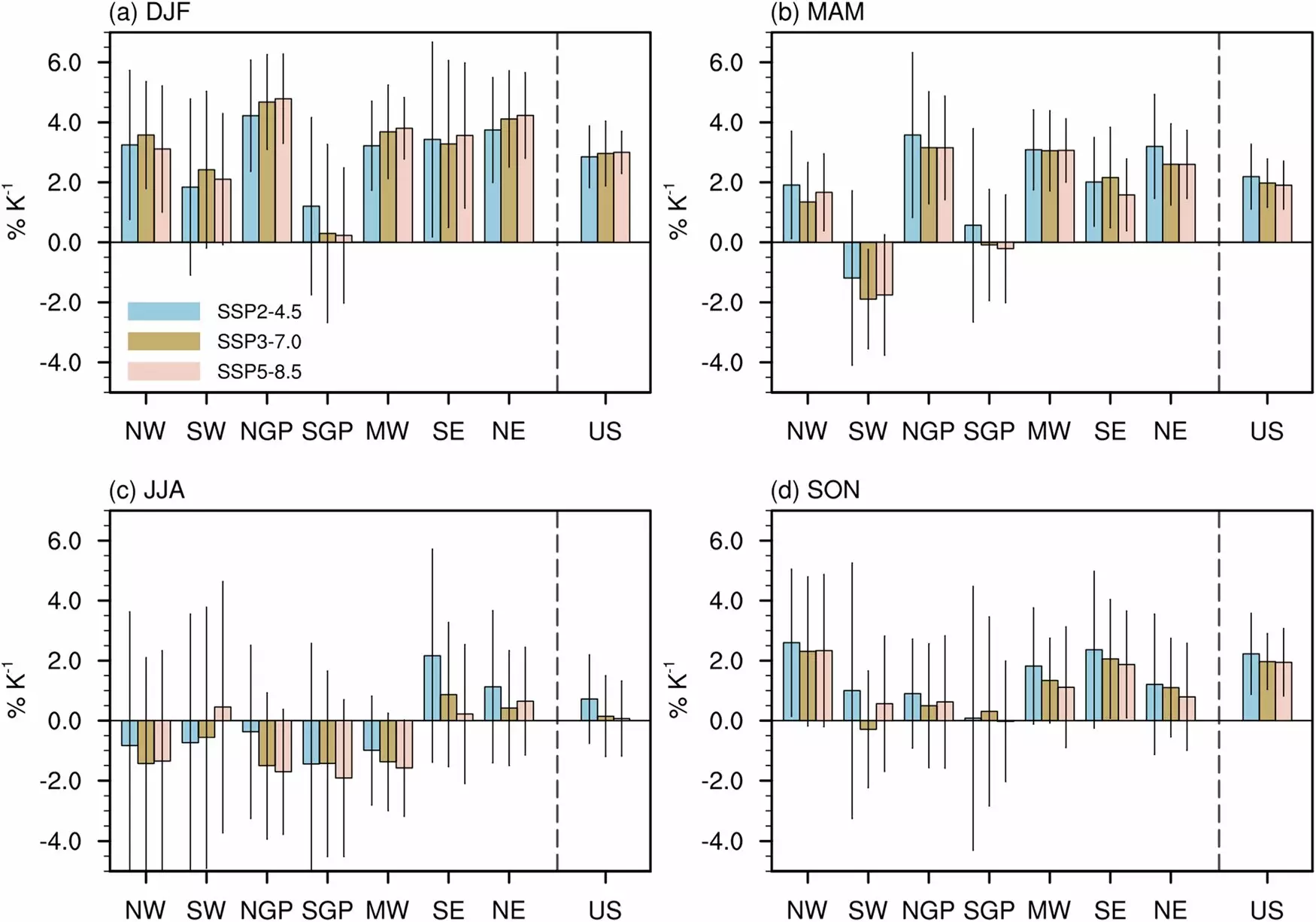Global warming has undeniably emerged as one of the most pressing issues of our time, affecting various aspects of life and nature around the world. Among the many ramifications of this phenomenon, shifts in winter precipitation patterns in the United States demand urgent attention. A recent study led by Akintomide Akinsanola from the University of Illinois Chicago sheds light on how winters in America are expected to get wetter and wetter, bringing with them potential consequences for agriculture, infrastructure, and water resources.
In conducting this study, Akinsanola and his team utilized 19 different Earth system models to evaluate projected changes in winter precipitation across the U.S. These models provide a robust framework for projecting climate trends, analyzing past data from the period between 1985 and 2014, and looking ahead to the end of the 21st century (2070-2099). By dissecting the precipitation changes into seven distinct U.S. subregions as outlined in the National Climate Assessment Report, the researchers aimed for a granular understanding of the impacts eating into local climates.
By employing a thoroughly analytical approach, the team identified an overall increase in winter precipitation of 2% to 5% per degree of warming. What stands out from their findings is the significant increase in the frequency of “very wet” winters, which are defined as ranking in the top 5% of historical winter precipitation. In previously dry areas, this could lead to winters that occur once every four years—an alarming figure that underscores the rapid nature of the climate crisis.
The shift from snow to rain is particularly alarming for agricultural systems that rely on predictable seasonal changes. Farmers depend on the snowpack for water supply, especially during the dry months of spring and summer. With increased rainfall and decreased snow accumulation, there could be serious implications for crop yields, soil health, and overall agricultural resilience. The vitality of water resources will also be tested, as increased rain can lead to faster runoff and reduced groundwater recharge.
Moreover, this increased precipitation is poised to cause severe flooding, other weather-related calamities, and heightened stress on infrastructures, such as bridges, dams, and drainage systems. Akinsanola raised an important point: as winter storms become more intense, there’s an urgent need to enhance existing infrastructures to handle the pressures of extreme weather. A proactive approach is essential to mitigate the long-term risks posed by these changes.
Interestingly, the study highlighted differences across regions within the United States. For instance, while the Northeast and Midwest are expected to experience the most pronounced wet winters, the Southern Great Plains, comprising states like Texas and Oklahoma, display small and highly uncertain projected changes. This area may endure more frequent dry events, indicating an imbalance and dichotomy in precipitation patterns across the country. The stark contrast between regions calls for targeted adaptations and responses, rather than a one-size-fits-all solution.
Such regional differences also extend to how water management strategies are developed. With some regions grappling with excess water while others face scarcity, policymakers and scientists must work collaboratively to devise strategies that are flexible and region-specific.
Looking ahead, Akinsanola’s commitment to employing higher-resolution models for future research endeavors reflects the necessity of refining our understanding of localized weather phenomena. It is imperative that policymakers, scientists, and communities work in unison to address the challenges stemming from climate change. More than ever, adapting our infrastructure, enhancing water conservation techniques, and implementing effective stormwater management plans will be crucial for succeeding in this new era of unpredictability.
The findings of this study are a stern reminder that without aggressive action to combat climate change, the implications for U.S. winters—and indeed, the broader climate—will be dire. It becomes even more vital now to integrate scientific findings into our urban planning and environmental strategies to safeguard future generations against the ever-evolving climate challenges.


Leave a Reply